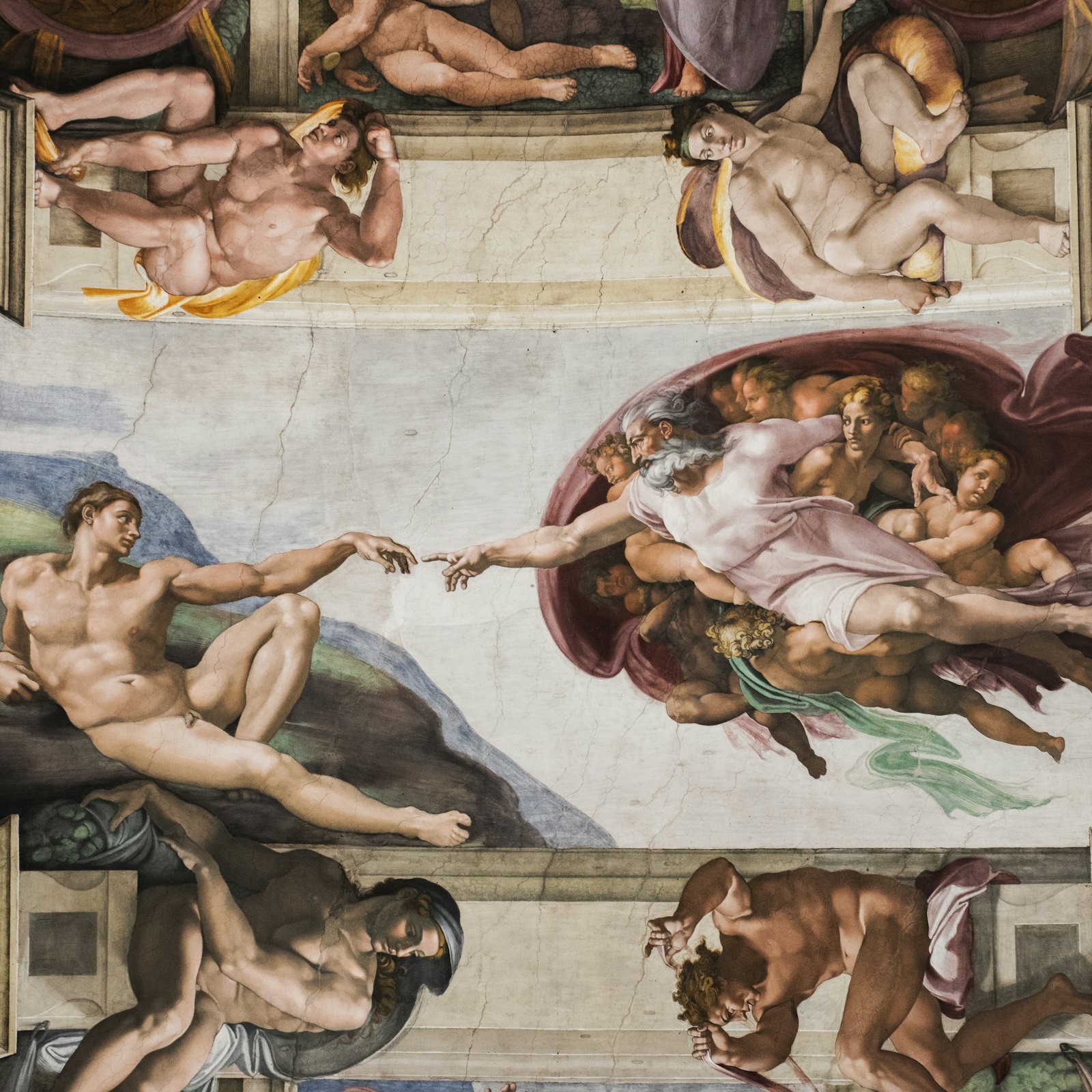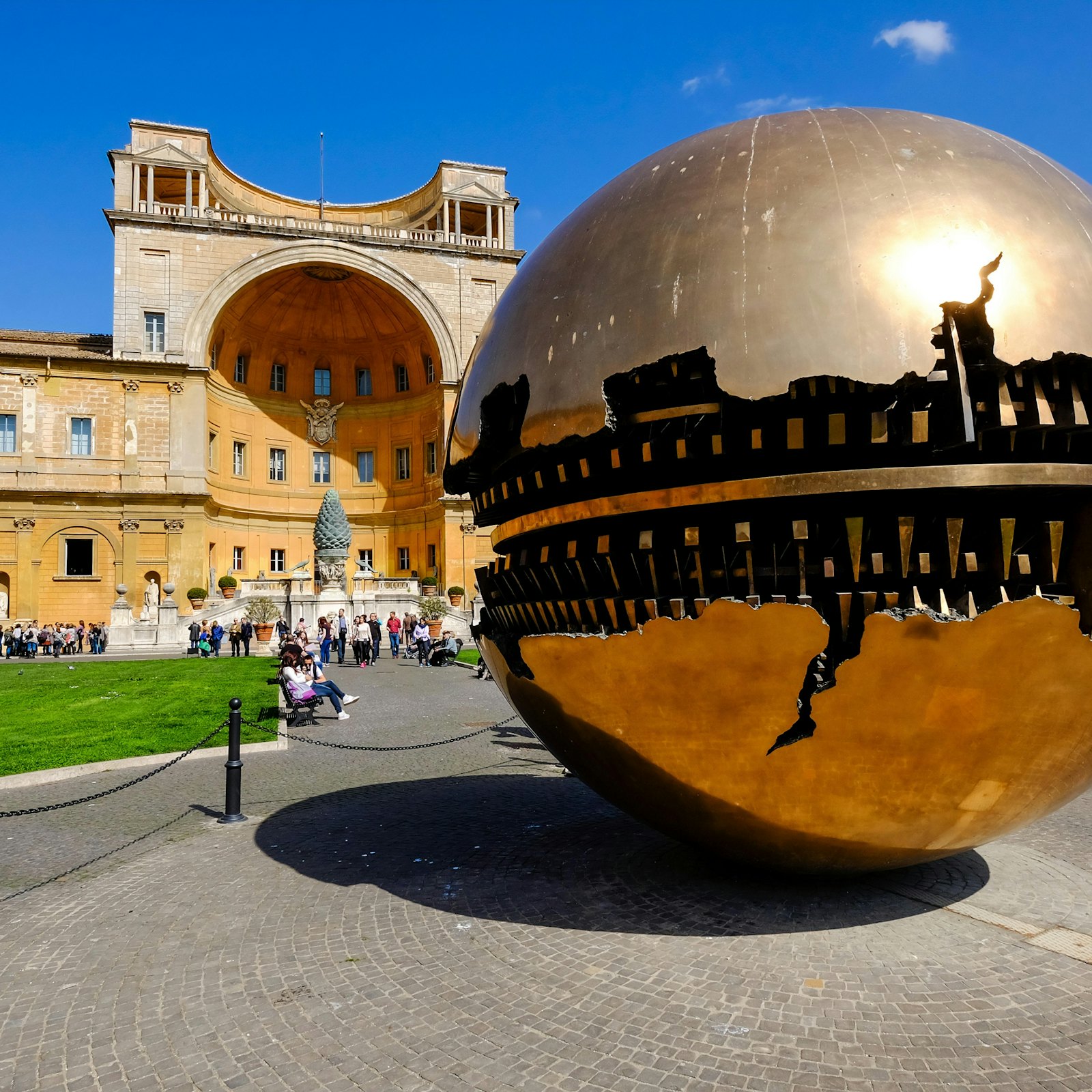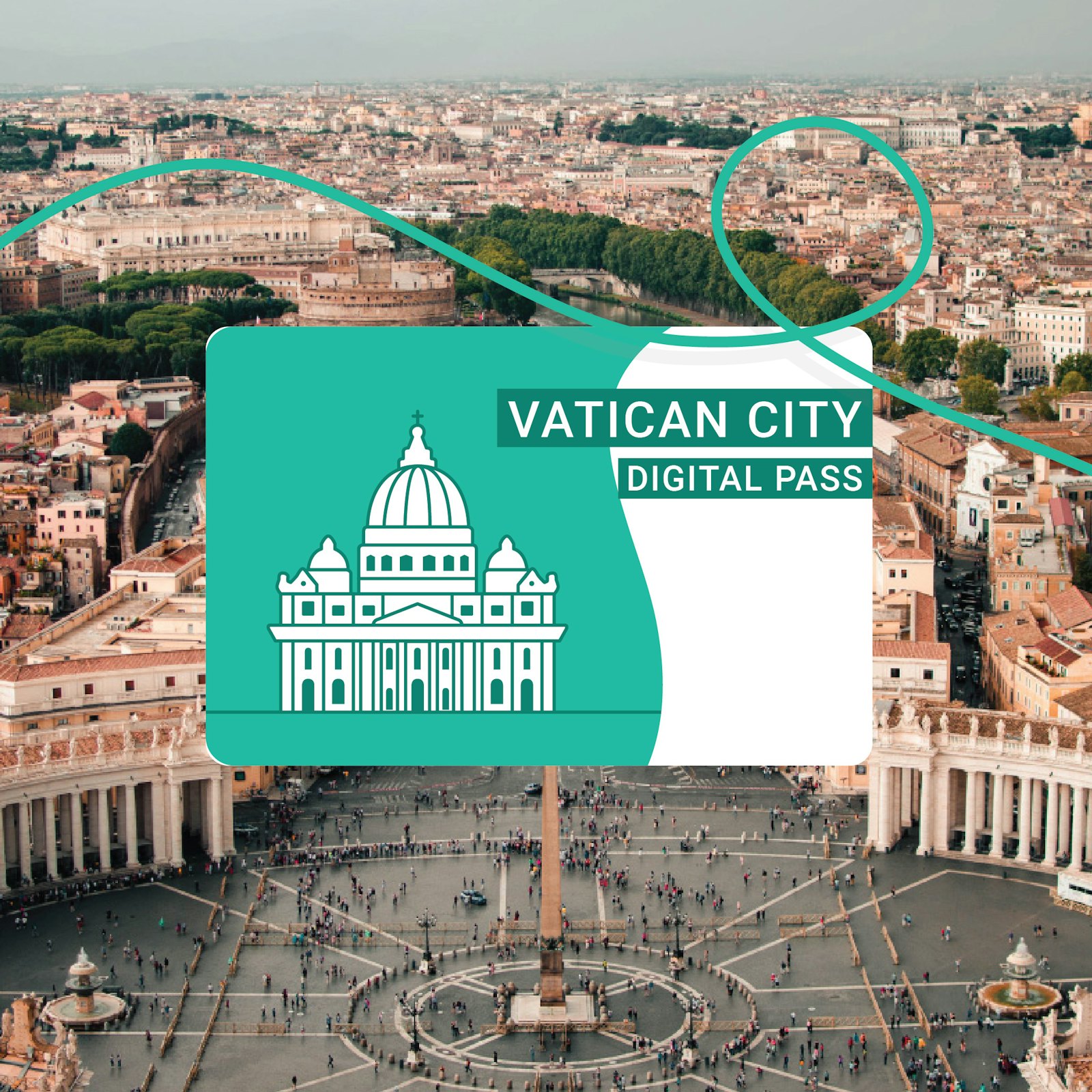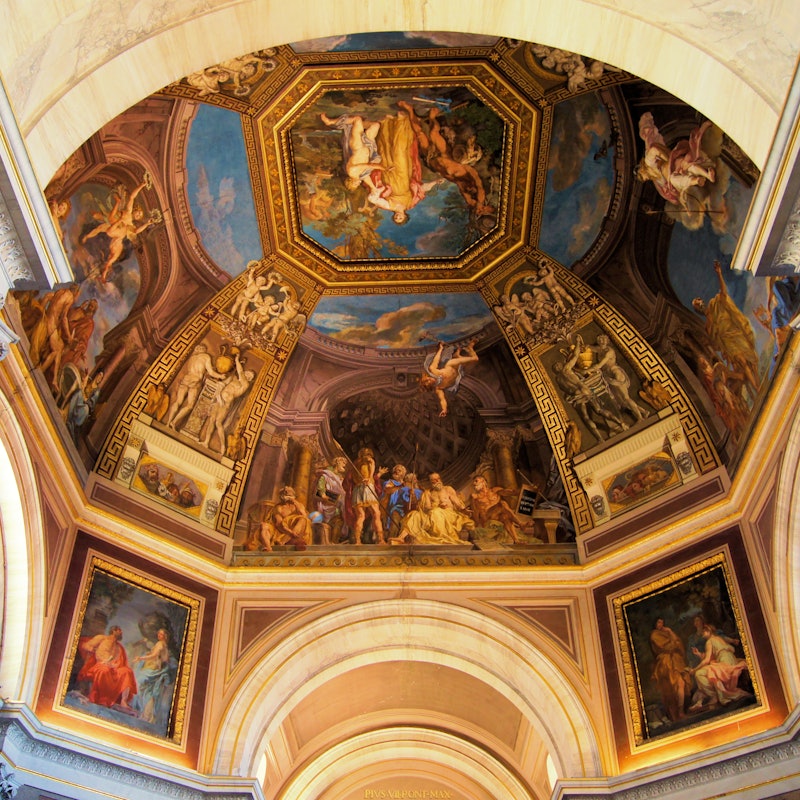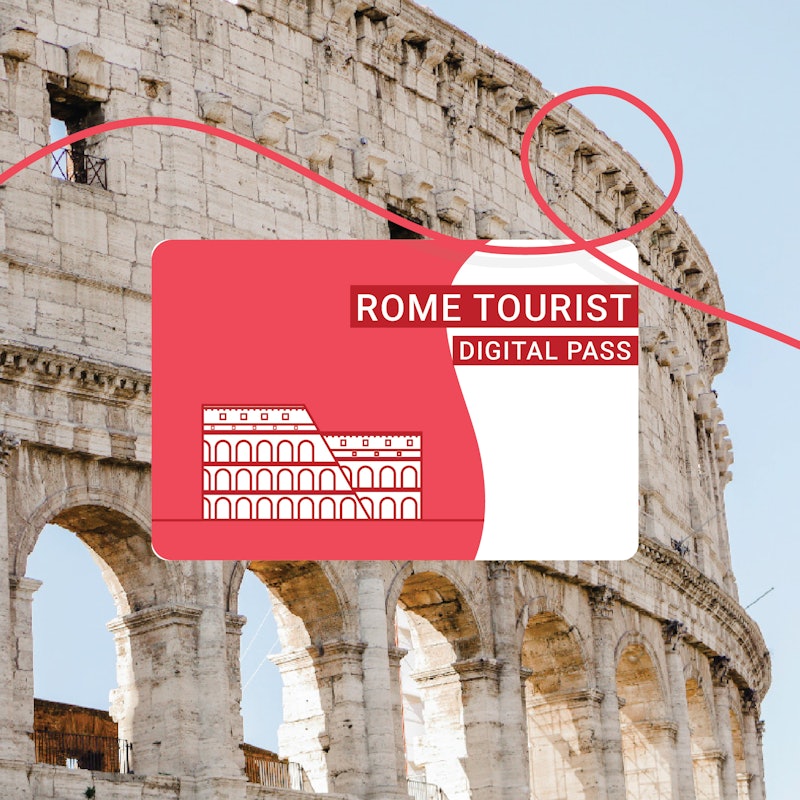Vatican Museums and Sistine Chapel
More TicketsHeading
More TicketsHeading
More TicketsVatican Tickets and Information
Vatican Museums Ticket Availability
We strongly suggest if you are planning on visiting the Vatican Museums & Sistine Chapel you purchase your tickets in advance as they regularly sell out. The Vatican Museums limits the number of tickets sold and they are only available online. During peak months its often sold out weeks in advance, so if you know when you are travelling, we suggest you book tickets as early as possible to help try and avoid disappointment.
FUN FACT: St Peter's Basilica, located in the Vatican is one of the largest churches in the world!
Popular Vatican Ticket Options
Vatican Museums & Sistine Chapel: Skip The Line Tickets with Optional Audio Guide
BESTSELLER
What's Included
- Skip-the-line entrance ticket to the Vatican Museums & Sistine Chapel
- Grants access to all open rooms and galleries so you can discover them at your own pace
FUN FACT: Although the euro is the official currency used in the Vatican, it does still have its own currency (the Vatican lira) and it's still used for ceremonial purposes! However, you can still spend Euros there too!
Vatican Museums & Sistine Chapel: Skip The Line, Last Minute Tickets
BESTSELLER
What's Included
- Skip-the-line entrance ticket to the Vatican Museums & Sistine Chapel
- Welcome and assistance at the meeting point
- Access to all open rooms and galleries so you can discover them at your own pace
- Vatican Gardens minibus tour (not suitable for children under 6 years old) - Only if selected
FUN FACT: The St. Peter's Square Obelisk (the tall stone pillar) was actually originally built in Egypt, however it was moved to Rome by Emperor Caligula and was eventually placed in St. Peter's Square by Pope Sixtus V in 1586!
Vatican Museums & Sistine Chapel: Guided Tour Tickets
BESTSELLER
What's Included
- Skip-the-line entrance ticket to the Vatican Museums & Sistine Chapel
- Guided tour of the Vatican Museum & Sistine Chapel granting access to all open rooms and galleries
- Audio headsets so you can always hear your guide
- Tour operated by professional & licensed Vatican guide
FUN FACT: The Vatican has its own observatory, known as the Vatican Observatory, which conducts astronomical research and is one of the oldest astronomical research institutions in the world.
About The Vatican Museums & Sistine Chapel
Nestled within the smallest country in the world, Vatican City, the Vatican Museums and Sistine Chapel offer a mixture of art, culture, and history.
These iconic institutions are one of the most popular tourist attractions and landmarks in Rome and draw visitors from across the globe every year, offering a glimpse into the magnificence of human creativity spanning centuries.
Origins and Evolution of The Vatican Museums & Sistine Chapel
The Vatican Museums owe their existence to a series of visionary pontiffs who recognized the importance of preserving and showcasing the vast artistic and historical treasures that were being held at Vatican City.
Pope Julius II, in particular, can be credited as the catalyst for the museums' creation. In the early 16th century, he acquired the famed ‘Laocoön’ and ‘Apollo Belvedere’ sculptures, which laid the foundation for what would become the Vatican Museums.
Over the centuries, subsequent popes added to and expanded the collection with further pieces of art and artifacts.
In the 18th century Pope Clement XIV established the ‘Pio-Clementino Museum’ at which point the Vatican Museums took an official and more formalized shape.
The ever-growing collection eventually outgrew its original space which prompted the construction of additional wings and galleries and so the expansion of the museums began.
FUN FACT: The Swiss Guard is the smallest and oldest standing army in the world, responsible for the security of the Vatican. Their distinctive uniforms, designed by Michelangelo, make them easily recognizable.
The Vatican Museums Today
Today, the Vatican Museums comprise of a complex network of museums, galleries, and courtyards which collectively display an extensive array of art and historical artifacts.
The museums are a treasure trove and attract art enthusiasts, historians, and curious travellers alike from all over the world, making it one of the most popular attractions in Rome.
Key highlights at the Vatican Museums include the ‘Pio-Clementino Museum’, the ‘Gallery of Maps’, the ‘Gregorian Egyptian Museum’, and the ‘Raphael Rooms’, each offering a unique perspective on the evolution of art and culture. And of course, the Sistine Chapel.
Some of the most famous pieces of art include: Caravaggio and his ‘Deposition of Christ’ which is on display in the Pinacoteca Museum. Van Gogh, Rodin and Bernini also have pieces on display in the collection, amongst many others.
FUN FACT: The Vatican Gardens cover more than half of the Vatican City's territory. They are private and can only be visited on guided tours.
The Sistine Chapel: Michelangelo's Magnum Opus - The Pinnacle of Renaissance Art
We can’t talk about the Vatican Museums without starting with the Sistine Chapel, of course. Probably the most famous of all the museums. Consecrated in 1483, the Sistine Chapel has become synonymous with artistic genius, thanks to the transformative work of Michelangelo. The ceiling frescoes which depict scenes from the Book of Genesis, are arguably some of the most renowned and famous artworks within the chapel and known around the world.
FUN FACT: The dome of St. Peter's Basilica, designed by Michelangelo, is one of the largest domes in the world. It offers panoramic views of Rome and the Vatican City.
Michelangelo's ceiling frescoes are a symphony of colour, movement, and narrative. The iconic "Creation of Adam," with the outstretched hands of God and Adam, epitomizes the connection between humanity and the divine. The entire ceiling is a visual feast, with intricate details and masterful use of perspective creating a sense of depth and grandeur.
The Last Judgment
Michelangelo returned to the Sistine Chapel decades later to paint "The Last Judgment" on the altar wall. This monumental fresco was completed in 1541 and depicts the second coming of Christ and the final judgment of souls. The composition is a whirlwind of emotion and movement, showcasing Michelangelo's unparalleled ability to capture the human form and convey profound spiritual themes.
FUN FACT: Latin is the official language of the Vatican, but Italian is commonly used for everyday communication.
Other Treasures within the Sistine Chapel
While Michelangelo's frescoes are probably the most famous pieces and do take centre stage, the Sistine Chapel is also home to other artistic treasures. The chapel's walls are adorned with works by Botticelli, Ghirlandaio, and Perugino which all add to the collection as well as the Papal Throne.
SEE ALL VATICAN MUSEUMS & SISTINE CHAPEL TICKET OPTIONS
The Vatican Museums Consist of:
- Gregorian Egyptian Museum
- Pio Clementino Museum
- Pius-Christian Museum
- Lapidario Profano ex Lateranense
- Christian Lapidarium
- Carriage Pavilion
- Porfane Museum
- Chapel of St. Peter Martyr
- Ethnological Museum
- Niccoline Chapel
- Room of the Immaculate Conception
- Gregorian Etruscan Museum
- Chapel of Urban VIII
- Room of the Chiaroscuri
- Borgia Apartment
- Lapidary Gallery
- Gregoriano Profano Museum
- Pinacoteca
- Sistine Chapel
- Raphael's Rooms
- Chiaramonti Museum
- New Wing
- Room of the Aldobrandini Wedding
- Christian Museum
- Jewish Lapidarium
- Collection of Modern and Contemporary Art
Pio-Clementino Museum: Marvels of Classical Sculpture
The Pio-Clementino Museum was inaugurated by Pope Clement XIV in the 18th century and stands as a homage to classical antiquity. Its halls are filed with sculptures that echo the grandeur of ancient Greece and Rome. The collection in this museum include the iconic ‘Belvedere Torso’ to the ‘Apollo Belvedere’ and the ‘Laocoön Group’. which were part of the founding collection. Visitors are immersed in the timeless beauty of classical sculpture as they tour the museum. The Belvedere Torso is a fragmentary marble sculpture and is particularly striking, with its dynamic pose and muscular forms suggesting a heroic figure.
Highlights and Key Sculptures
Among the most revered sculptures in the Pio-Clementino Museum is the Apollo Belvedere. This ancient Roman copy of a Greek original portrays the god Apollo in a pose that epitomizes the ideals of classical art with harmony, proportion, and idealized beauty.
Equally captivating is the Laocoön Group, a marble masterpiece which depicts the Trojan priest Laocoön and his sons entwined in the coils of serpents. Such sculptures not only showcase artistic prowess but also serve as windows into the mythologies and narratives of antiquity.
Tips for Visitors
When exploring the Pio-Clementino Museum, take your time to absorb the intricate details of each sculpture. The audio guides provide further details on the sculptures and joining a guided tour also offers a deeper understanding of the historical and cultural context surrounding these timeless works of art as the experts will provide further insight.
The Pinacoteca
The Pinacoteca is a collection of around 460 paintings and home to masterpieces by some of the greatest artists from Italian history including works by Crespi, Caravaggio, Raphael, Melozzo da Forli, Perugino, Leonardo, Tiziano and Veronese, amongst others.
Architect Luca Beltrami was commissioned by Pius XI to create a building with best lighting conditions to show the art, as well as best location and to ensure preservation of the art that would be held there. The gallery was inaugurated in October 1932.
The Gallery of Maps (La Galleria delle Carte Geografiche)
The Gallery of Maps is a mesmerizing journey through the evolution of mapmaking and will fascinate those with an interest in geography and cartography. Commissioned by Pope Gregory XIII in the late 16th century, the gallery features a series of topographical maps depicting Italy's regions during that period.
The intricate details and vibrant colours of the maps, which were all done by hand, show the skill of the Renaissance cartographers who crafted them. They were created for serving practical geographical purposes and are also works of art in their own right.
Each map tells a story, not only of the landscapes they represent but also of the political and cultural dynamics of Renaissance Italy. Keep an eye out for details added such as sea monsters and other mythological figures, which add an extra layer of fascination to these historical cartographic treasures.
Raphael Rooms: A Testament to Renaissance Brilliance
Named after the illustrious Renaissance artist Raphael, the Raphael Rooms or the ‘Stanze di Raffaello’ are a collection of four interconnected rooms that are filled with frescoes that exemplify the pinnacle of Renaissance art.
Raphael, along with his workshop, created these masterpieces between 1508 and 1524, and they continue to be celebrated for their artistic innovation and cultural significance still today.
Significant Pieces: The School of Athens
One of the most iconic frescoes within the Raphael Rooms is "The School of Athens," which is located in the Room of the Segnatura. This masterpiece encapsulates the intellectual spirit of the Renaissance period and features a gathering of philosophers, scientists, and scholars from different historical periods. The central figures, Plato and Aristotle, appear to be in deep contemplation and are surrounded by other luminaries such as Socrates, Euclid, and Ptolemy. Just imagine that conversation!
To fully appreciate the Raphael Rooms you may want to consider following the works in chronological order. To do this you can start with the Room of the Segnatura, and then progress through the successive rooms - Room of Heliodorus, then the Room of the Fire in the Borgo, and then the Room of Constantine. This chronological approach allows visitors to see the evolution of Raphael's style and themes over the years and how they changed.
Useful Information About Vatican Museums & Sistine Chapel
Vatican Museums and Sistine Chapel Opening Hours
Monday 09:00 - 18:00 | Tuesday: 09:00 - 18:00 | Wednesday 09:00 - 18:00 | Thursday 09:00 - 18:00 | Friday 09:00 - 18:00 | Saturday 09:00 - 22:30 | Sunday: Closed
Vatican Museums and Sistine Chapel Address
Vatican Museums, Vatican City, 00120
How to get to the Vatican Museums
By Bus: Number 49 to Viale Vaticano
By Metro: Line A to Valle Aurelia, then a 5-minute walk
By Tram: Number 19 to Piazza del Risorgimento, then a 10-minute walk
Vatican City Fun Facts
- Vatican is the smallest country in the world and only became an independent country in 1929!
- The Vatican is the only country in the world to have a cash machine with JUST Latin instructions on it!
- The Vatican has its own football team!
- The Vatican has less than 1000 residents!
- The Vatican is a UNESCO World Heritage Site.
- The Vatican is the only country on earth not to have its own prison!
- Its suggested the Vatican consumes more wine than any other country in the world (on a per capita basis)!
- The Vatican is home to the shortest railway line in the world!
Vatican Museums & Sistine Chapel
More TicketsVatican Museums & Sistine Chapel Tickets
FAQ
Tickets for the Vatican Museums really do sell out. We always suggest you book in advance to try and avoid disappointment,
With the Vatican Museums and Sistine Chapel being a religious location, they don't like revealing clothes and low-cut clothes, sleeveless tops and see-through clothing aren't allowed and you will also likely be asked to remove hats on arrival. Any baggage such as backpacks or suitcases will need to be left in their cloakroom as well.
Being one of Rome's most popular tourist attractions, the Vatican Museums are rarely quiet but low season is classed as October - April so can generally be quieter during that time. We also offer morning entrance ticket options to allow special entry before the crowds. Our VIP early-access ticket includes breakfast at the Vatican as well as a guided tour. So if you are looking for a quieter visit, may be the morning breakfast ticket is the best option for you. Just click HERE to see that ticket option or see the ticket box above! Friday evenings can also sometimes be quieter. However our Skip the Line tickets do help to avoid and reduce your queuing!
The Vatican Museums are the rooms in the Vatican that are home to some of the Catholic Church's vast collection of art and sculptures. The museums aren't independent museums scattered around the Vatican, but better described as the galleries, rooms, courtyards, staircases and chapels where the church stores and displays some of their collection.
Yes, the Vatican Museums and Sistine Chapel are wheelchair accessible. The Vatican also has disability-friendly toilets.
You can be as quick as you like, but in all honesty in order to try and enjoy the whole process, we would suggest at least 3 or 4 hours so you can enjoy all aspects and take your time and not rush to enjoy.
The Vatican Museums and Sistine Chapel are one of the most popular tourist attractions in Italy, let alone just Rome. We would always suggest buying your tickets in advance online as queues for those that haven't purchased tickets in advance can be hours long. Buy our Skip The Line Tickets and you don't have to worry about that!
No - you do not need your passport to enter the Vatican, you simply enter via one of its two entrances, Via della Conciliazone or Viale Vaticano.


